Swimming is a great way for babies to have fun and learn valuable life skills. When it comes to packing for baby swimming lessons, there are a few essential items that you’ll need to bring along.
In this article, we’ll go over what to pack for baby swimming lessons to ensure that your little one have a safe and enjoyable time in the water.
When packing for baby swimming lessons, it’s very important to bring the right items to ensure that your baby is comfortable and safe.
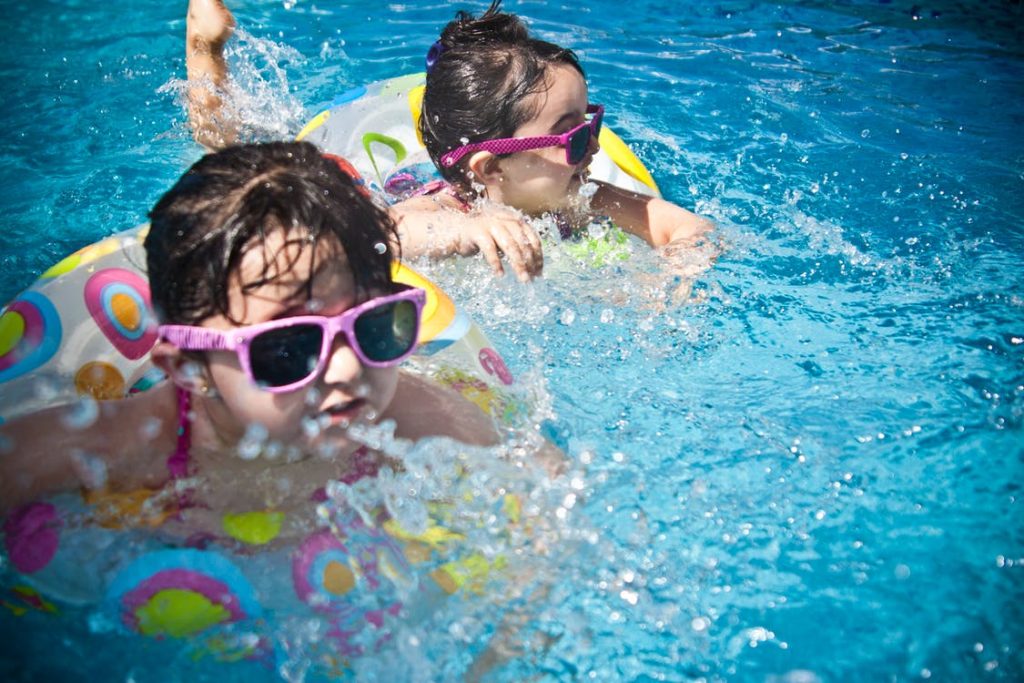
Also, if for the first time, you are planning on taking your baby to swimming lessons, there are a few things you will need to pack to make the experience as enjoyable and safe as possible. Below are some important items you should consider packing:
What to pack for baby swimming lessons
-
A swim diaper
Swim diapers are designed to hold excreted waste from the baby, to prevent the waste from contaminating the pool water. Swim diapers are necessary for babies who are not yet toilet-trained.
Regular diapers are not designed for use in water, this type of diapers can become heavy and saggy when wet, which can cause excreted waste leaks and make it difficult for your baby to move around in the water.
Swim diapers are a requirement at most public pools, so be sure to bring one with you.
5 importance of a swim diaper for babies in the pool water
- Swim diapers provide a barrier against leaks, which can be a concern for babies who are not yet potty trained.
- They provide a secure and snug fit to prevent accidents.
- They prevent the spread of bacteria and germs in the pool water.
- Swim diapers can help prevent diaper rash by keeping the baby’s sensitive skin dry and free from prolonged exposure to urine or feces.
- Swim diapers can provide added peace of mind for parents and caregivers, allowing them to focus on enjoying the water with their baby without worrying about accidents.
2. A swimsuit or swimwear
Make sure your baby has a swimsuit that fits properly and is comfortable. Avoid choosing a swimsuit that is too loose or too tight, as this can cause discomfort for your baby.
If your baby is very young, you might want to opt for a full-body swimsuit with a built-in floatation device.
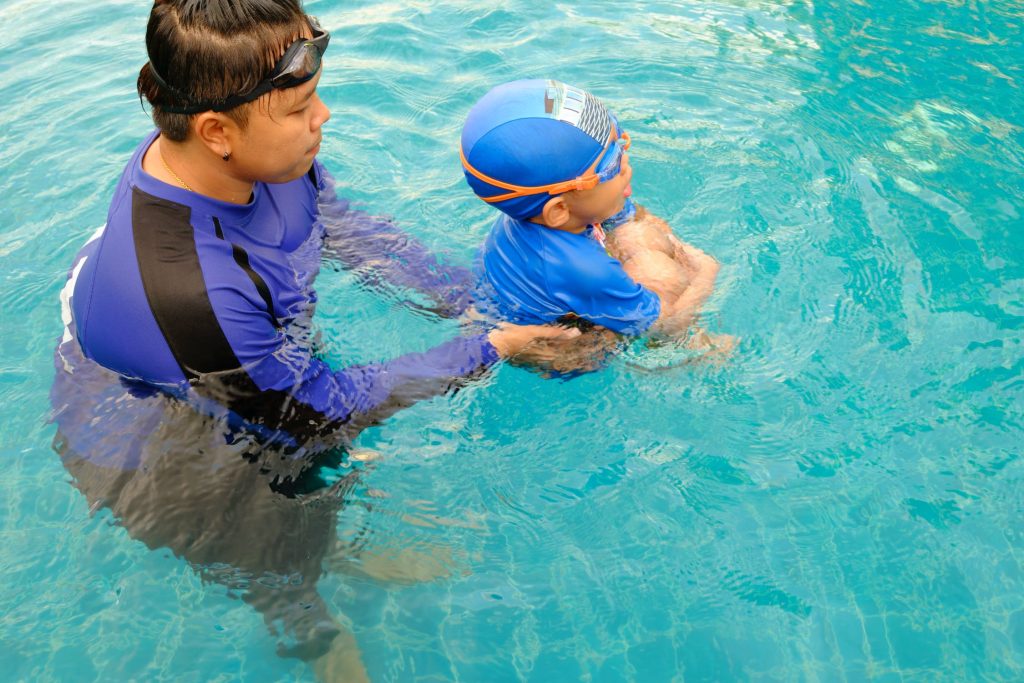
How to choose the right swimsuit or swimwear for baby
When choosing a swimsuit or trunks for a baby, there are a few important factors to consider. The first factor is:
- The fit: The swimsuit or swimwear should be snug, but not too tight, to ensure that the baby is comfortable and able to move freely.
- The second factor to consider is the material. Look for a swimsuit or swimwear made from a soft, breathable material that will be gentle on the baby’s delicate skin.
- Lastly, consider the style and design. Choose a swimsuit or swimwear with a fun and age-appropriate design that the baby will enjoy wearing.
- Additionally, you may want to look for a suit with a built-in diaper for easy changes, as well as one that is easy to get on and off.
READ ALSO: 10 Important Reasons a Toddler Suddenly Hates Swimming Lessons
3. Towels
Bring at least two towels, one for drying your baby off after their swim and another for them to use as a cover-up when they’re not in the water.
It is important to have a towel available to dry off a baby after a swim lesson for several reasons. Below are some of the reasons:
The need for a towel to dry off the baby after the swim lesson
- Comfort: A baby who is wet and cold after a swim lesson may become uncomfortable and distressed. Drying off with a towel can help to keep the baby warm and comfortable.
- Health: Wet skin can be more prone to irritation and infection. Drying off with a towel can help to prevent these issues.
- Safety: A wet and slippery baby can be more difficult to hold and handle, which can be dangerous in a pool or other wet environment. Drying off with a towel can help to make the baby more manageable and reduce the risk of accidents.
- Convenience: Drying off with a towel can make it easier to dress the baby after the swim lesson and can help to reduce the amount of water that gets on clothing and other items.
- Hygiene: Drying off with a towel can help to remove any chlorine or other chemicals that may be on the baby’s skin after the swim lesson. This can help to maintain good hygiene and prevent irritation or other skin issues.
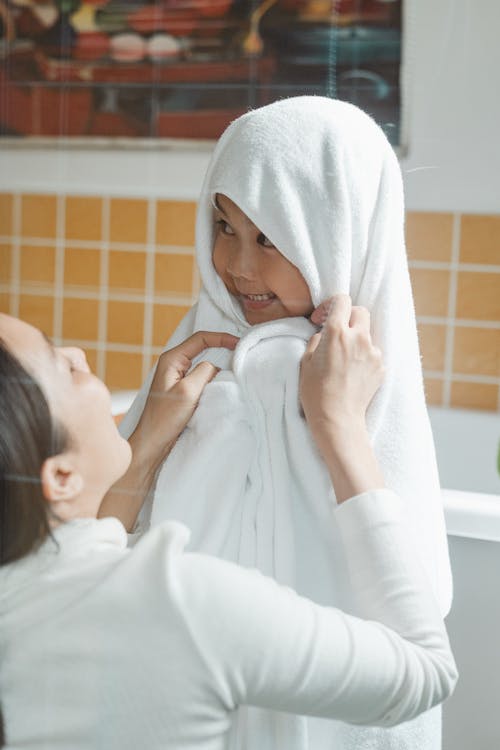
4. Sunscreen
If you will be spending time outdoors before or after the lesson, be sure to apply sunscreen to your baby’s skin to protect them from the sun’s harmful rays.
It’s important to protect your baby’s delicate skin from the sun, even when they’re in the water. Choose a sunscreen with a high SPF and make sure to apply it to your baby’s exposed skin before their swim lesson.
The importance of using sunscreen on baby’s skin
- Protects against skin cancer: Sun exposure is a major risk factor for skin cancer, and babies and children are particularly vulnerable to the harmful effects of the sun. Using sunscreen can help protect your baby’s skin from the harmful ultraviolet (UV) rays that can cause skin cancer.
- Prevents sunburn: Sunburns can be painful and can cause long-term damage to the skin. Using sunscreen can help prevent sunburns and the associated pain and discomfort.
- Prevents premature aging: Sun exposure can cause premature aging of the skin, including wrinkles and age spots. Using sunscreen can help prevent these signs of aging and keep your baby’s skin looking youthful.
- Reduces the risk of sun allergies: Some babies and children are prone to sun allergies, which can cause redness, itching, and inflammation of the skin. Using sunscreen can help reduce the risk of sun allergies and associated discomfort.
- Keeps skin moisturized: Some sunscreens contain moisturizing agents that can help keep a baby’s skin hydrated and healthy. This is especially important for babies with dry or sensitive skin.
READ ALSO: 14 Important Swim Meet Survival Kit
5. A change of clothes
Bring a change of clothes for your baby in case they get wet or dirty during the lesson. This will also come in handy if you plan to do any other activities after the lesson.
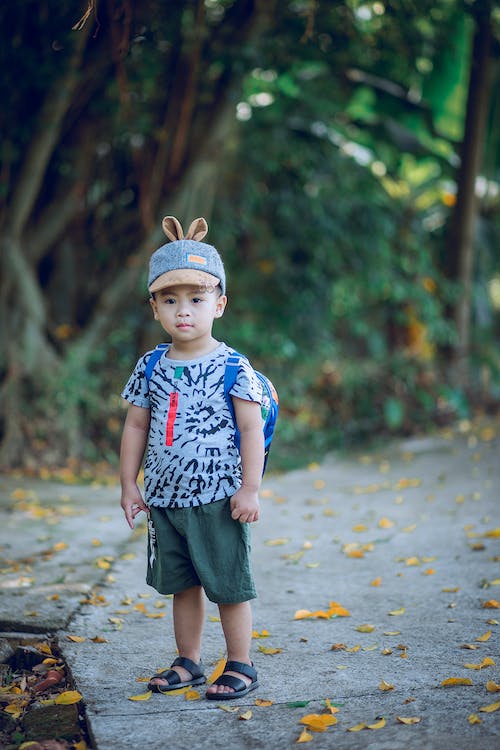
The importance of having a change of clothes for the baby
- Hygiene: The baby needs to have a clean, dry change of clothes after swimming to prevent any skin irritation or infections.
- Comfort: Wet swimsuits can be uncomfortable for some babies to wear for an extended period of time. A dry change of clothes can help keep your baby comfortable and happy.
- Safety: If the baby is wearing a wet swimsuit after swimming, they may be at risk of getting a cold, which can lead to hypothermia. A dry change of clothes can help keep your baby warm and safe.
- Convenience: It can be inconvenient to have to pack and carry around a wet swimsuit, especially if you are on the go. Having a dry change of clothes makes it easier to get your baby dressed and ready to go after swimming lessons.
- Protection: If the baby is wearing a wet swimsuit outside of the pool, it can become heavy, making it difficult for them to move freely. A dry change of clothes can help protect the baby from accidents or injuries that may occur if they are unable to move easily.
6. Snacks and water
It’s a good idea to pack some snacks and water for your baby to have after their lesson. This will help replenish any energy they may have burned during the lesson.
It is important to keep your baby hydrated and fed during their swim lesson. Taking along some healthy snacks and water with you will keep them fueled up.
7. A swim cap
If your baby has long hair, a swim cap can help keep it out of their face and prevent it from getting tangled in their swim goggles.
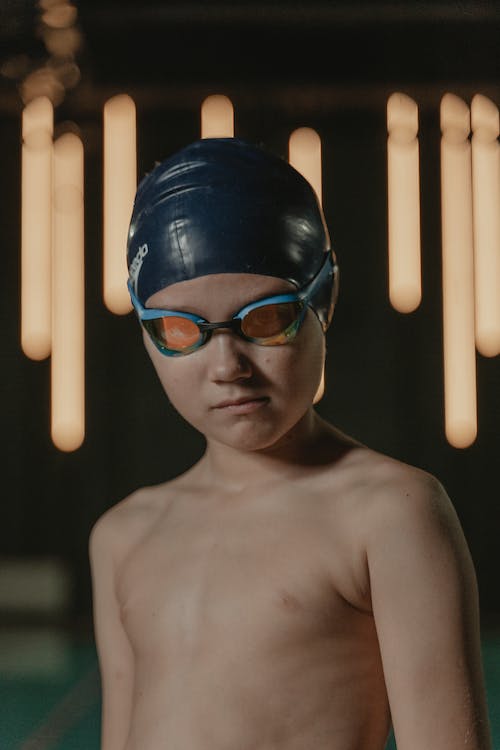
The benefits of using a swim cap for a baby
- Keeps hair dry: A swim cap can help keep a baby’s hair dry while swimming, which can be especially important for babies with long hair or sensitive scalp.
- Protects against the sun: A swim cap can also provide some protection against the sun’s harmful UV rays, which can be damaging to a baby’s delicate skin.
- Helps keep earplugs in place: If your baby needs to wear earplugs to protect their ears from water, a swim cap can help keep the earplugs in place and prevent them from falling out.
- Increases visibility in the water: A swim cap can also make it easier for you to spot your baby in the water, especially if you choose a bright or reflective color. This can be especially important if your baby is just learning to swim and may need extra supervision.
-
Easy to store: Swim caps are lightweight and easy to pack, making them convenient for traveling with a baby.
8. Swim goggles
These swim goggles can help protect your baby’s eyes from the chlorine in the pool and make it easier for them to see underwater. Look for a pair that fits snugly and doesn’t leak.
9. A swim floatation device
If your baby is very young or not a strong swimmer, a floatation device such as a swim ring or life jacket can help keep them safe in the water. Choose one that is age-appropriate and fits your baby properly.
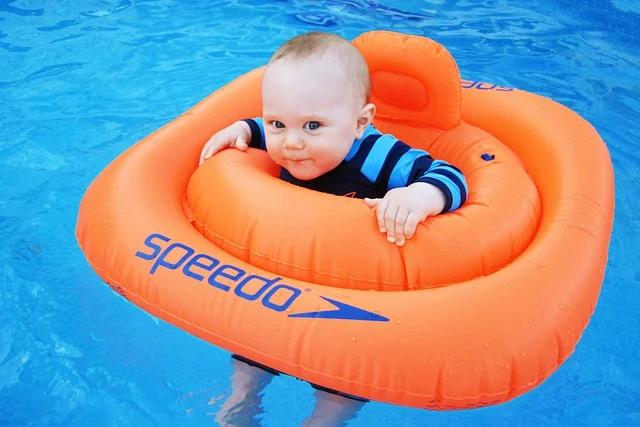
READ ALSO: 5 Reasons Why A Baby Hates Swimming Lessons and What you can do about it
10. Hat
A hat can help protect your baby’s head and face from the sun before swimming in an outdoor pool. Choose a hat with a wide brim that covers your baby’s face and neck.
It’s also a good idea to bring any items your baby may need for comfort or security, such as a pacifier or a favorite toy.
Tips for packing and organizing all necessary items for baby’s swimming lesson
To avoid delay and omission of important swimming items, below are some tips for packing and organizing all necessary items for a baby’s swimming lesson:
- Make a checklist of all the items you need to bring, so you don’t forget anything important.
- Pack a bag with all of these items, along with any other items you might need during the lesson (such as sunscreen, a snack, and a change of clothes).
- Consider using a small suitcase or tote bag to hold everything, so you can easily transport it to and from the pool.
- If you have multiple children, consider using different colored bags or labeling them to help you keep track of each child’s belongings.
- Don’t forget to bring a waterproof bag or container for your phone and other valuables, so they won’t get damaged by the water.
- Finally, Gather all necessary items in advance, including a swim diaper, swimsuit, towel, and any other items required by the pool (such as a swim cap, life jacket and other floating devices).
Conclusion
Packing for baby swimming lessons doesn’t have to be overwhelming, after all, the key is to pack items that will help keep your baby comfortable, safe, and happy during their swim lesson.
By following the above-mentioned guidelines and tips, you can ensure that you and your baby are well-prepared for a fun and safe swimming lesson.